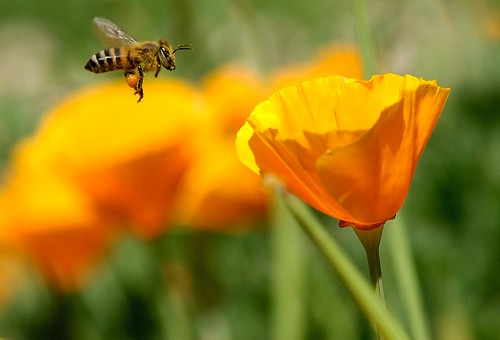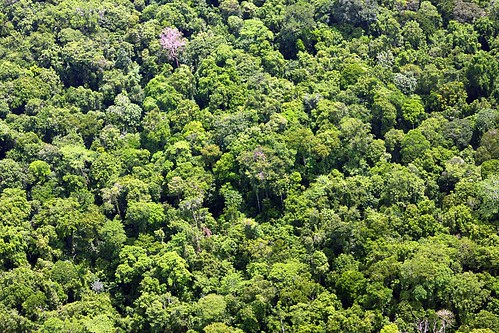
Busy bee doesn't bother thinking about such things
First, let's tackle the question of why pollen is yellow.
The short answer is, pollen is yellow because they contain compounds that make them yellow. Sounds obvious, but stick with me. These compounds are a class of chemicals known as flavonoids, which are also abundant in citrus. Aha! But the more difficult question is, why are plants packing their pollen with this stuff?
Well flavonoids are known to have UV-B protective properties. They might help protect the plant's gametes from accumulating harmful mutations.

Plant uses sunblock to prevent those unhealthy mutant babies.
Right! Second question: Why are there so many species in tropical rainforests? There are a few ideas on how this happens, namely that the tropics are a cradle (species are "born" faster), or a museum (species go extinct slower than in other places).
Confused? Read this. It'll help.
What John Flenley proposes in his editorial is that the reason why there are so many species in the tropics is connected to UV-B radiation. Plants (and animals!) in the tropics, especially those at the top of mountains, are exposed to higher levels of UV-B radiation than anywhere else. This may lead to higher levels of mutation, which may provide the genetic variation (the "stuff" evolution works on) within species for faster speciation.

Like giving evolution a 120-pack crayola box instead of a 8-pack to colour with.
Just a little food for thought, the next time you look at/pick/smell that that flower or eat an orange.
Further Reading:
Flenley, J. R. , Why is pollen yellow? And why are there so many species in the tropical rain forest?. Journal of Biogeography, no. doi: 10.1111/j.1365-2699.2011.02480.x

1 comment:
Thanks! I suddenly decided I needed to know where that yellow pollen is coming from. Yours was the first article I read. Very interesting. I have a row of pines at the back of my property. That explains the intense levels I get here.
Post a Comment